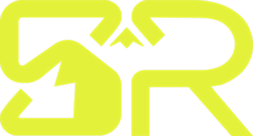
Career Tips Hub
Best practices to help you get started in your job application journey
Articles in this section
Resume tips
XYZ method: Structuring impactful bullet points
When you are writing bullet points, use the XYZ method, which is what you did, how you did it, and the results of what you did. Add metrics to communicate your experiences in a quantifiable way.
Tailor your resume: Prioritize relevance
Rewrite the entirety of your experiences into bullet points, and then use that list to tailor down your resume to the most relevant bullets, and ensure you order the bullet points by the most relevant.
Bridge the gap: Integrate key job description keywords
Any key words that appear on the job description that are not in your bullet points, put it in your skills section to bridge the gap and ensure that your resume is tailored to the job description.
Showcase your skills: Use projects and certifications
Listing projects is a great way to showcase relevant skills if you don’t have experience. Certificates speaks to your commitment to continuous learning outside a professional or academic setting.
Cover letter tips
Introduction: Set the stage with enthusiasm
Start your cover letter with a short introduction that states the role you're applying for, how you found it, and a brief overview of your background. This paragraph should also express enthusiasm for the company and position to set a positive, personalized tone.
Showcase key accomplishments: Use the XYZ method
In the second paragraph, highlight 1–2 key accomplishments that demonstrate your qualifications for the role. Use the XYZ method—what you did, how you did it, and the result—to clearly communicate your impact.
Why this company: Demonstrate genuine interest
Follow with a paragraph that explains why you're excited about this specific company and position. Show that you’ve done your research by referencing the company’s mission, recent achievements, or work culture.
Closing: Reaffirm interest and call to action
Close with a short paragraph reaffirming your interest and summarizing what you bring to the role. Include a call to action by stating your availability for an interview and thanking the reader for their time and consideration. Keep it professional but approachable.
LinkedIn profile tips
Headline: Craft a personal tagline
Your LinkedIn headline should go beyond just your job title—use it to communicate your specialty or the value you bring to your field. Think of it as a personal tagline that makes someone want to learn more about you.
Summary: Tell your career story
Use the summary section to tell your career story in a conversational and authentic voice. Write in the first person and focus on what drives you, what you're good at, and what you're working toward.
Experience: Reflect recent and relevant work
Make sure your experience section reflects your most recent and relevant work using bullet points similar to your resume. If there are keywords in job descriptions that you want to target but don’t appear in your experience, incorporate them into your skills section.
Enhance your profile: Add certifications and media
Adding certifications, projects, presentations, and even media files can make your profile more dynamic. These additions showcase your expertise and provide concrete examples of your work in action.
LinkedIn networking
Power of LinkedIn: Unlock job opportunities
LinkedIn is one of the most powerful tools for building your network and unlocking job opportunities. In fact, the way I landed my role at Google was through my optimized LinkedIn profile that caught a recruiter’s attention.
Use LinkedIn's search tool
Once your profile reflects your experience, skills, and goals, start using LinkedIn’s search tools to find people working at companies or in roles you admire. Send brief, respectful connection requests and follow up with a message asking for an informal coffee chat.
Coffee chats: Be curious and prepared
During those chats, be curious and prepared. Often, those conversations can lead to referrals or advice on how to stand out. In my case, I reached out to hiring managers and recruiters directly, and many of those conversations turned into interviews and job offers.
Follow up: Build real relationships
After the chat, follow up with a thank-you message and look for ways to stay connected. Engage with their content, share thoughtful posts of your own, or check in from time to time. Networking on LinkedIn is about building real relationships and showing up consistently.

Need help putting it all together?
Reach out for personalized support
1:1 Session
$145
- Includes:
- 1-on-1 personalized career coaching to boost your confidence
- Tailored resume advice and interview prep for your next move
- Professional guidance on career planning/navigation at any stage

